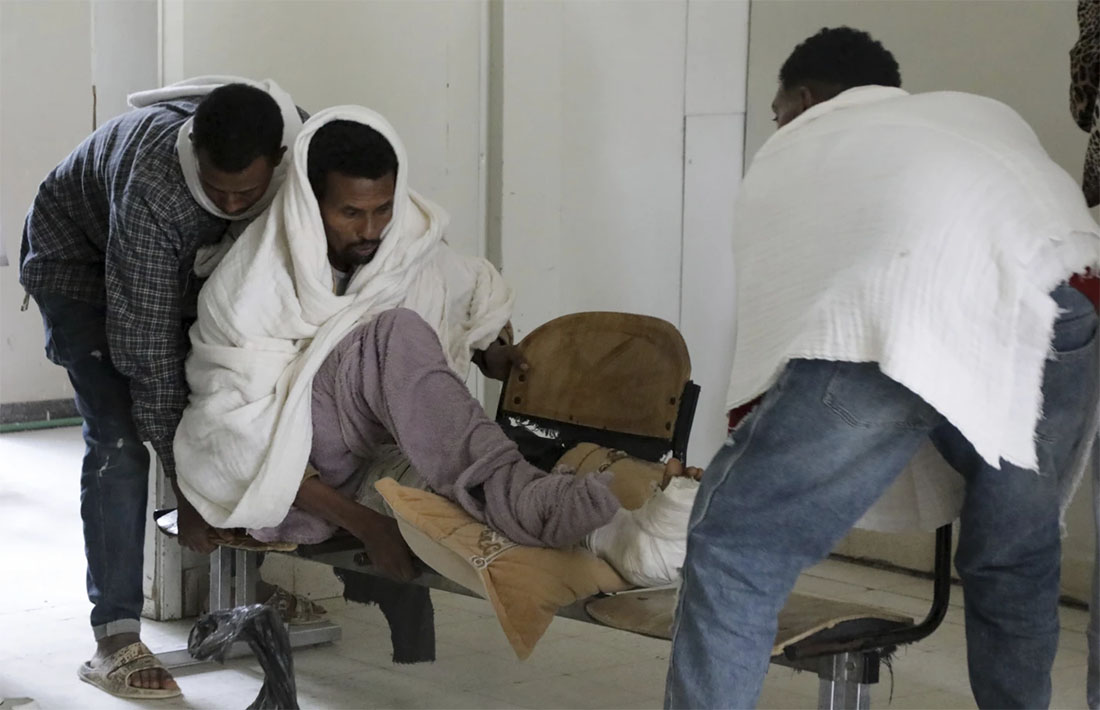
Photo Credit: Getty Images
The woman survived two brutal attacks in the dying days of the war in Ethiopia’s Tigray region. First, she said, she was dragged to a military encampment and gang-raped by Eritrean soldiers who held dozens of other women. Two days later, she was raped again by a group of militiamen.
Her attackers broke her collarbone and her wrist. They also infected her with HIV. More than two years later, she can sometimes buy antiretroviral drugs by selling part of the wheat she gets as a displaced person, but it’s not enough.
“I am strong, but my disease is getting worse and worse,” the woman told The Associated Press at a clinic in Shire, a town in northwestern Tigray. The AP typically does not identify people who are victims of sexual abuse.
Tigray was once considered a model in the fight against HIV. Years of awareness-raising efforts had brought the region’s HIV prevalence rate to 1.4%, one of the lowest in Ethiopia.
Then, in 2020, war began between Ethiopia’s government, backed by neighboring Eritrea, and Tigray fighters.
Sexual violence was widespread in the two-year conflict, which also had mass killings, hunger and disease. As many as 10% of women and girls aged between 15 and 49 in the region of 6 million people were subject to sexual abuse, mostly rape and gang rape, according to a study published by BMJ Global Health in 2023.
At the same time, Tigray’s health system was systematically looted and destroyed, leaving only 17% of health centers functional, according to another study in the same journal.
As a result, 90% of sexual violence survivors did not get timely medical support.
The woman told the AP she did not get medication for nearly eight months. The window for receiving prophylaxis to prevent HIV is 72 hours.
Today the HIV prevalence rate in Tigray is 3%, more than double the prewar average, according to local health authorities and the United Nations. The rate among the region’s roughly 1 million displaced people is 5.5%.
Among sexual violence survivors, it is 8.6%.
“It was a horrific conflict,” said Amanuel Haile, the head of Tigray’s health bureau. “War was everywhere. Crops failed. Rape was widespread. Hospitals were vandalized. Drugs were interrupted.”
The “complete breakdown” of Tigray’s health services also meant existing HIV patients did not receive antiretrovirals during the war, increasing their risk of transmitting the virus through pregnancy or unprotected sex, Amanuel said.
Few condoms were available during the war, which saw Tigray cut off from the rest of Ethiopia. Today, some destitute displaced people engage in sex work to survive, another factor that health workers believe is contributing to the spike in HIV cases.
The Trump administration’s decision to kill 83% of U.S. Agency for International Development programs globally is worsening the situation.
Ethiopia has already laid off 5,000 health workers who were hired with U.S. funds to combat HIV. Meanwhile, charities helping HIV patients receive treatment have received stop-work orders.
















